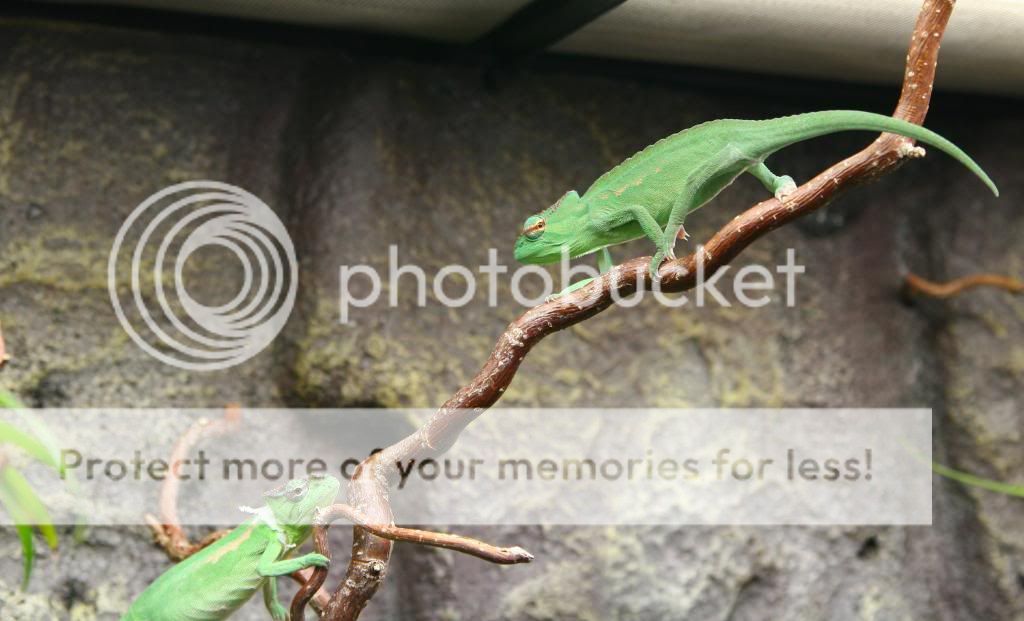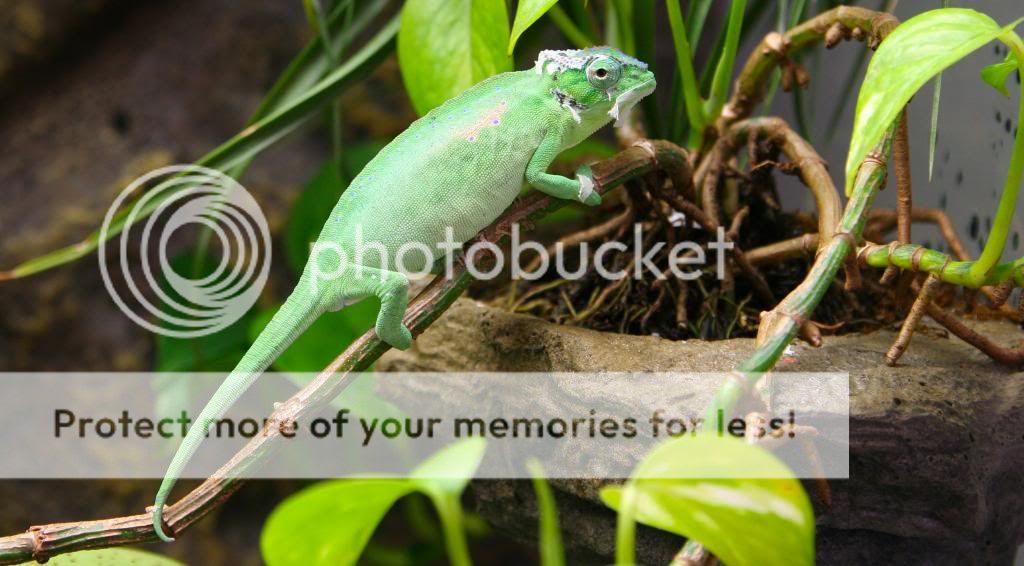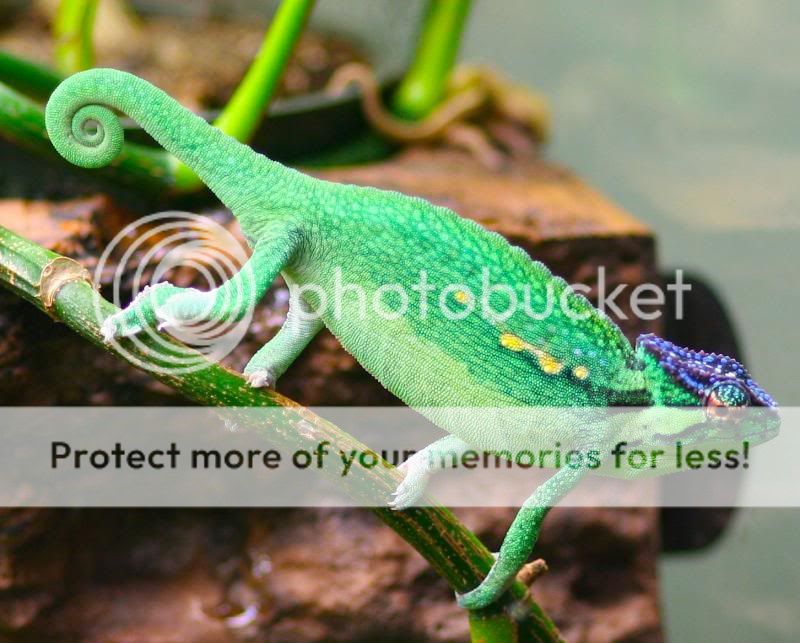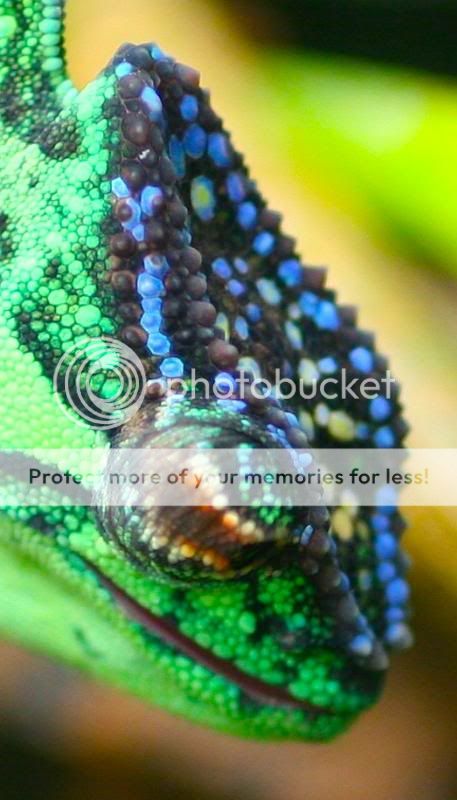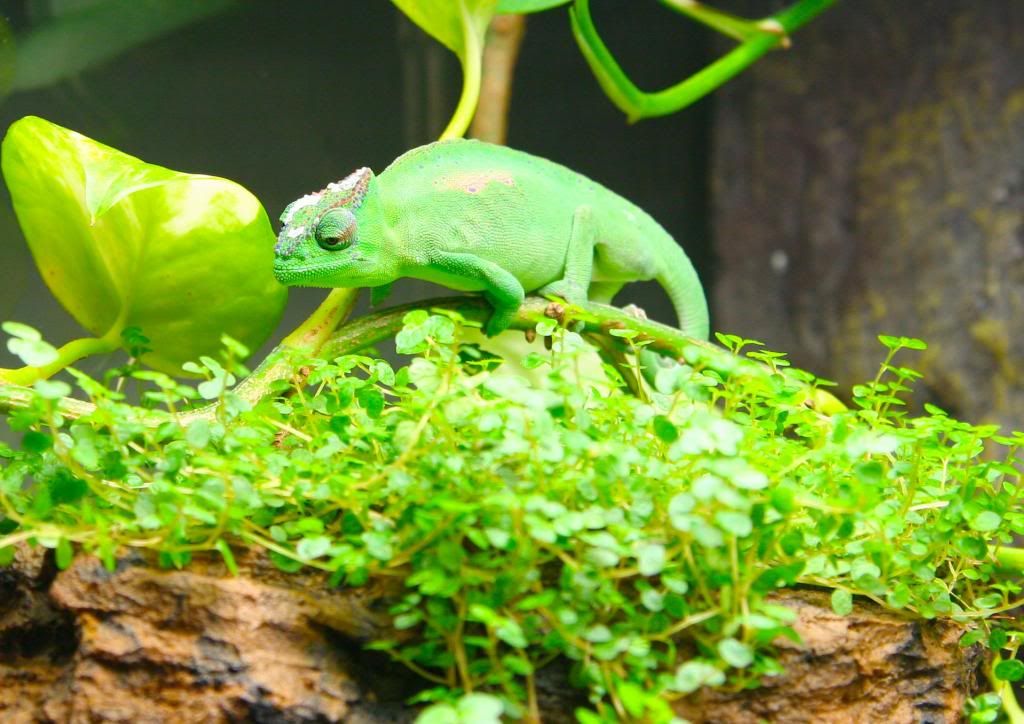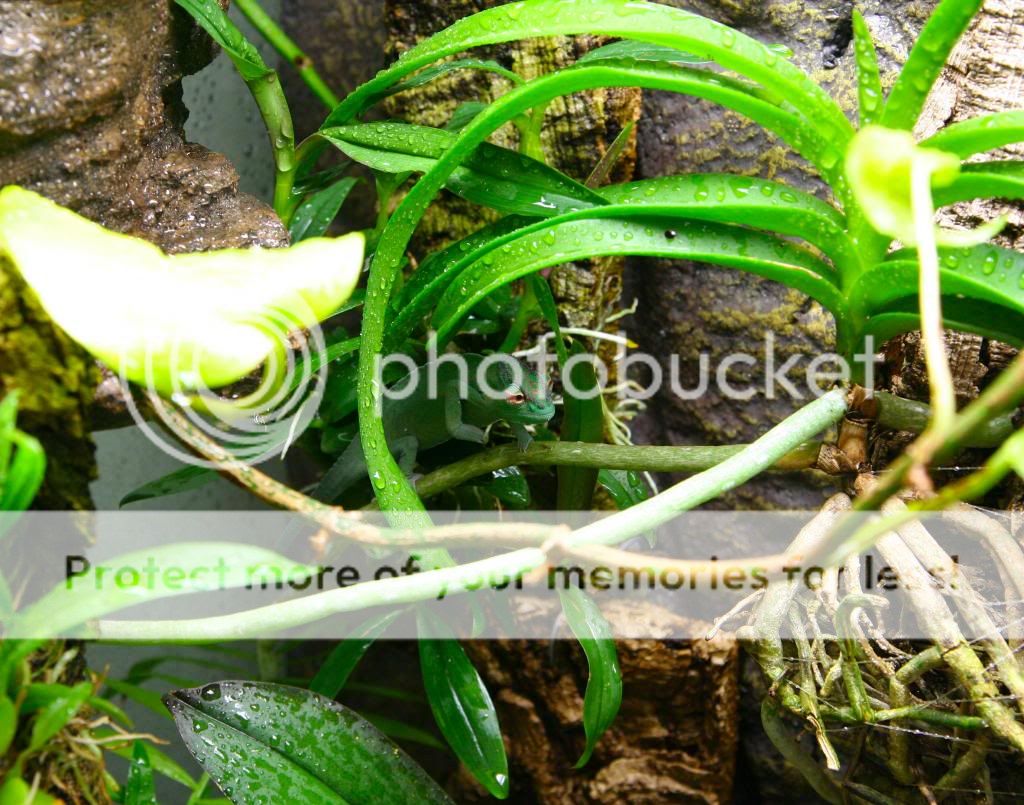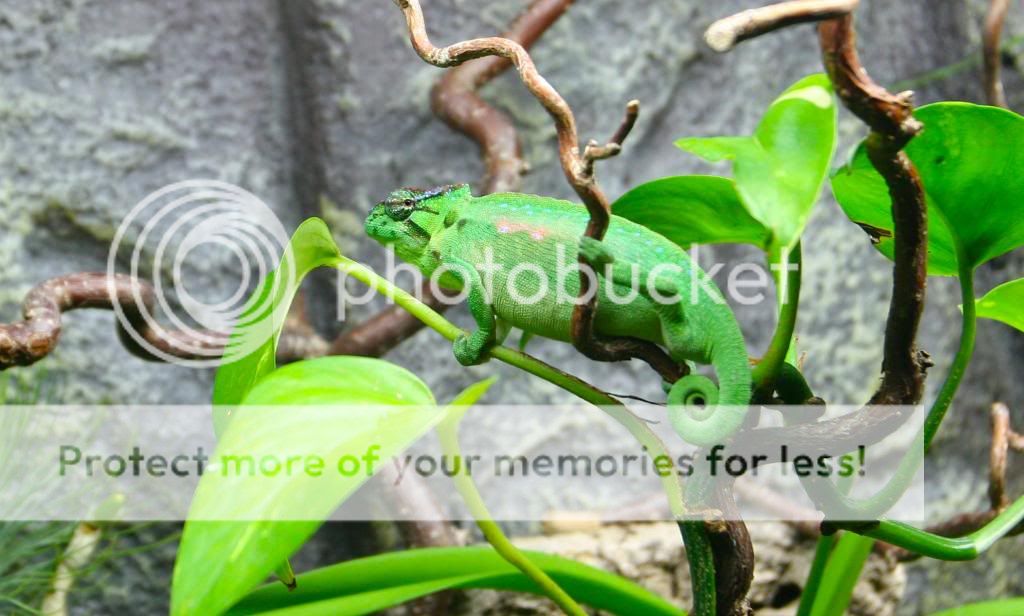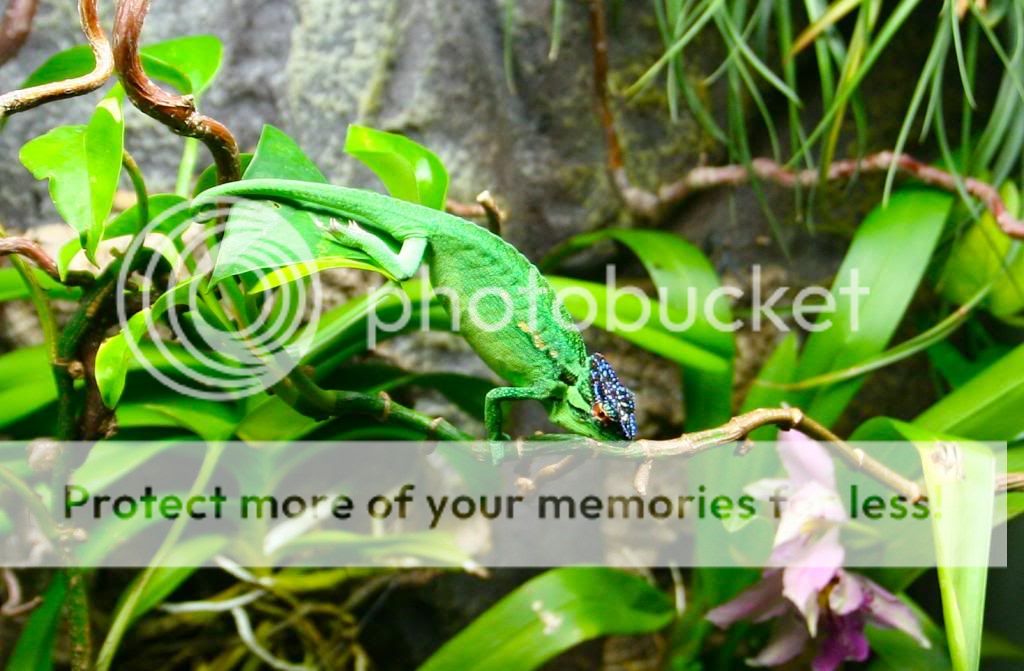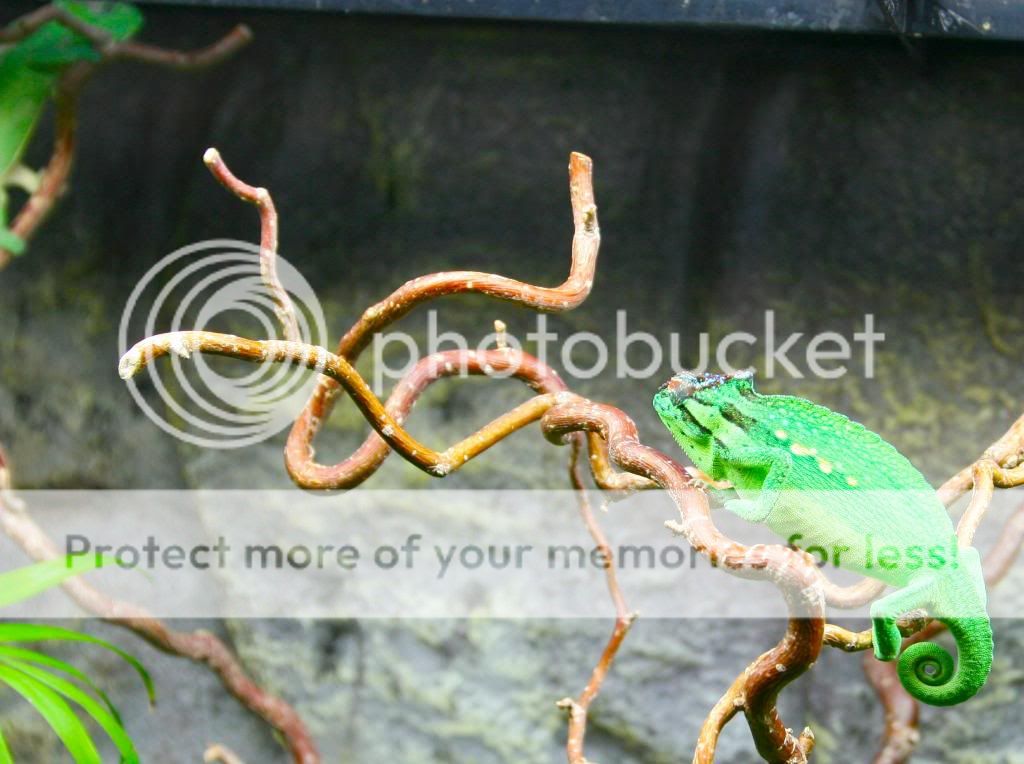Chameleopatrick
New Member
Today was a great day!
After 12 years of keeping the Chameleon formerly known as Wiedersheimi now known as two species separate species T. Perreti (smaller of the two) and T. Serratus from the mountains of cameroon, an F2 Serratus was successfully hatched. : )
I had only one egg survive after a devastating heat wave this summer that unfortunately cooked several of my only remaining F2 T.Serratus eggs.
Not only did the Serratus hatch but 5 T. perreti hatched in the container right next to it! So here is a couple of picture I thought I would share. The T.Serratus eggs were almost twice as large as the Perreti and after hatching was about 50% larger.
Below is a picture comparing the two that hatched this morning. T.perreti on top, F2T.Seratus below.

Another of the T.Serratus

The T.Serratus took 208 days to hatch while the Perreti took 184 days to hatch. The incubation temps varied between 66-72 degrees for both.
After 12 years of keeping the Chameleon formerly known as Wiedersheimi now known as two species separate species T. Perreti (smaller of the two) and T. Serratus from the mountains of cameroon, an F2 Serratus was successfully hatched. : )
I had only one egg survive after a devastating heat wave this summer that unfortunately cooked several of my only remaining F2 T.Serratus eggs.
Not only did the Serratus hatch but 5 T. perreti hatched in the container right next to it! So here is a couple of picture I thought I would share. The T.Serratus eggs were almost twice as large as the Perreti and after hatching was about 50% larger.
Below is a picture comparing the two that hatched this morning. T.perreti on top, F2T.Seratus below.
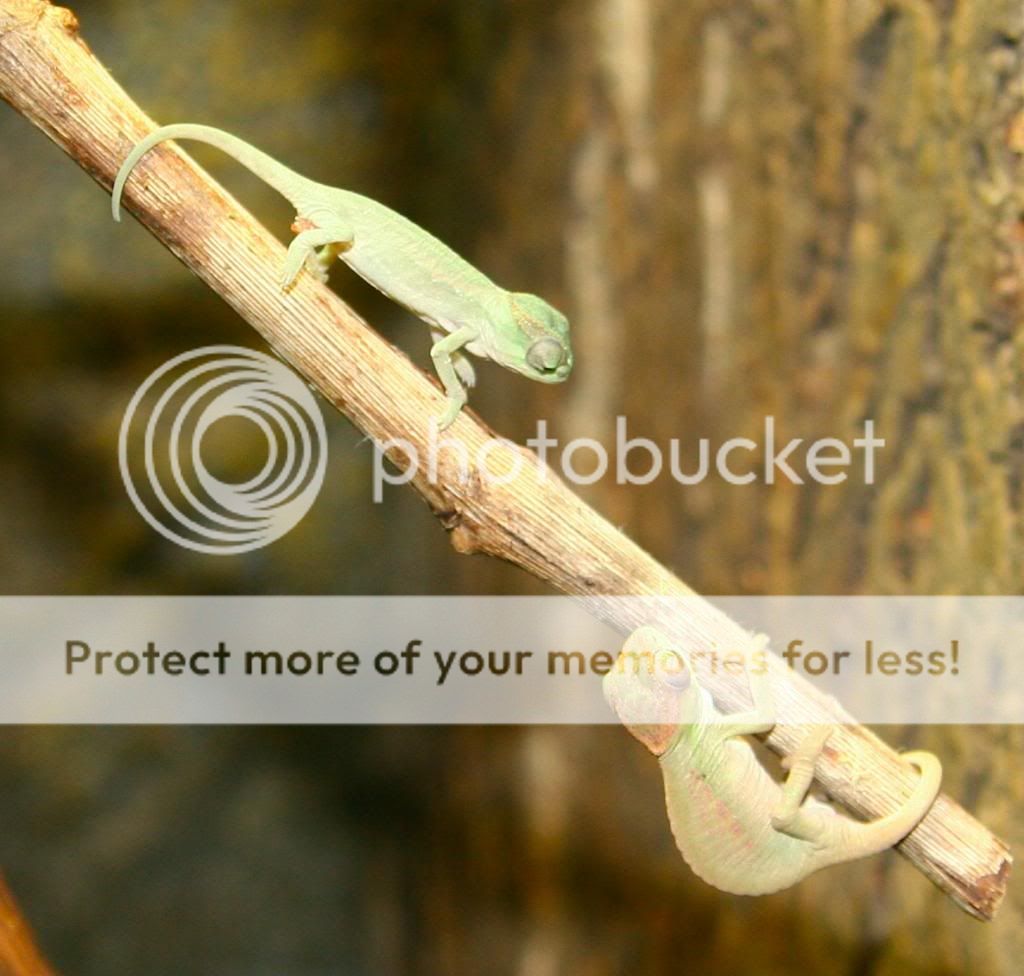
Another of the T.Serratus
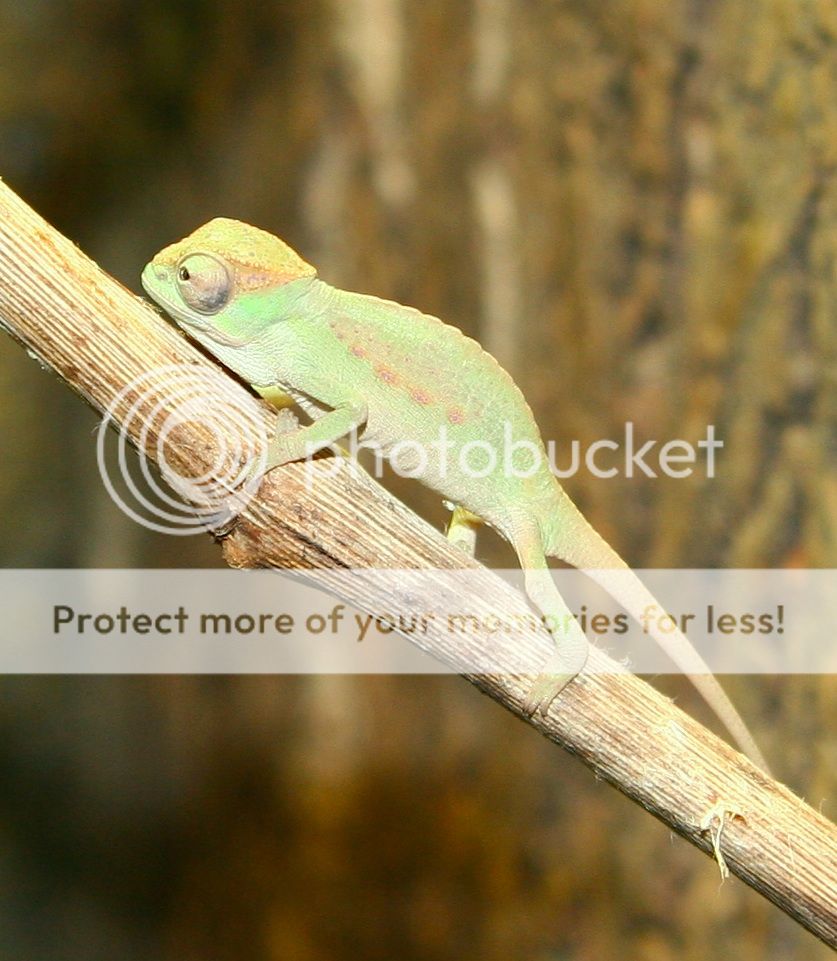
The T.Serratus took 208 days to hatch while the Perreti took 184 days to hatch. The incubation temps varied between 66-72 degrees for both.
Last edited:





